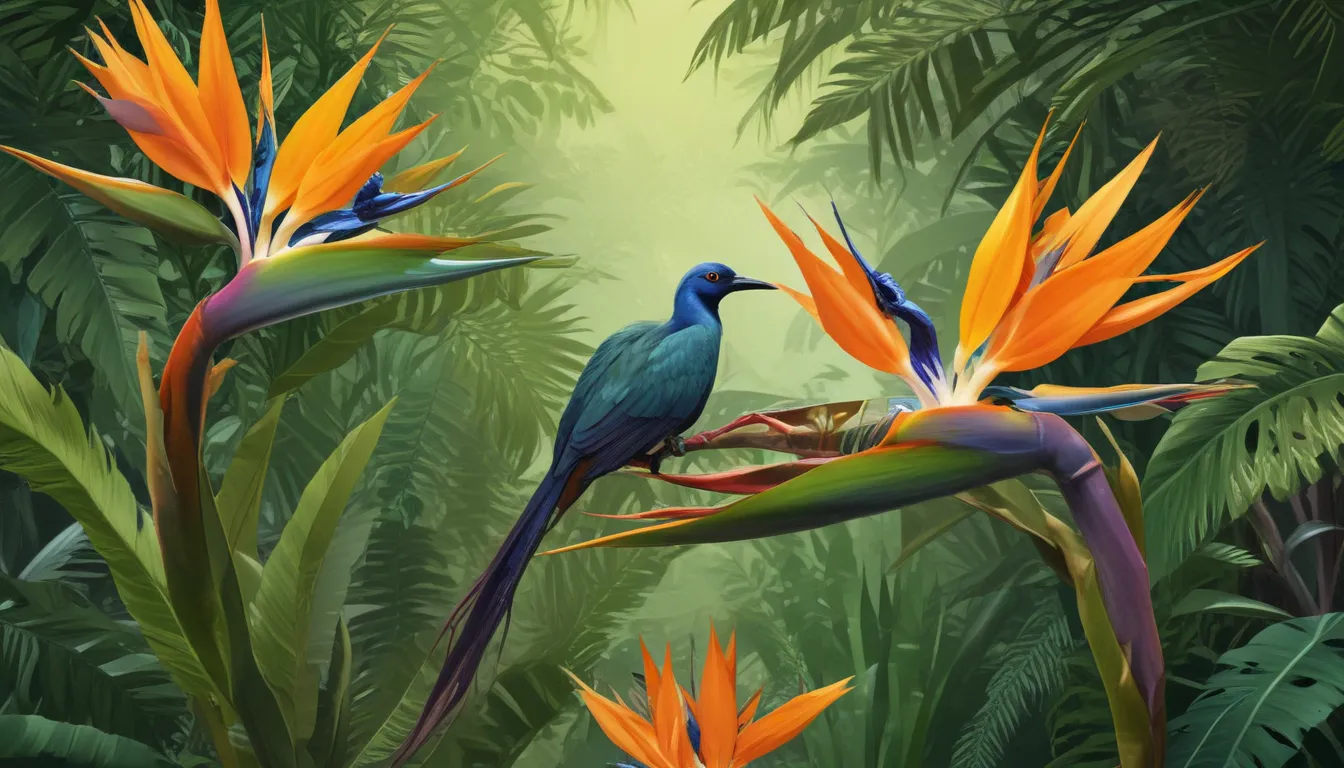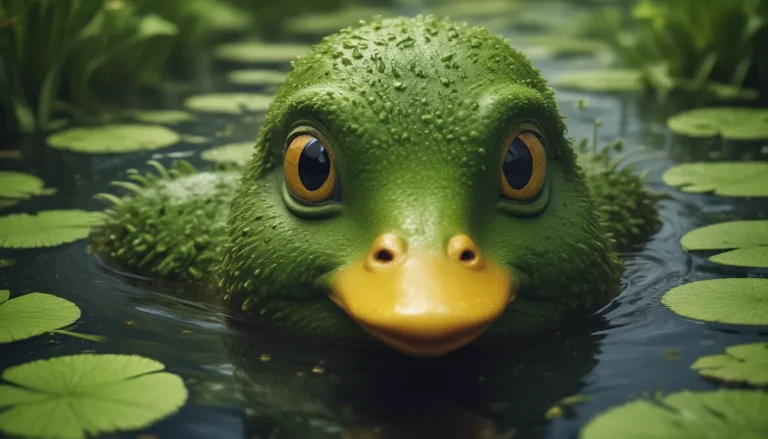The pictures we use in our articles might not show exactly what the words say. We choose these pictures to make you interested in reading more. The pictures work together with the words but don’t take their place. The words still tell you the important facts.
Are you ready to embark on a journey into the enchanting world of the Bird of Paradise Strelitzia reginae? This captivating plant, native to South Africa, has captured the hearts of gardening enthusiasts, floral designers, and landscapers around the globe. Known for its vibrant colors, unique shape, and symbolic significance, the Bird of Paradise is truly a living work of art.
Join us as we delve into 17 astonishing facts about the Bird of Paradise plant. From its origins and symbolism to its remarkable growth patterns and fascinating reproductive strategy, there's so much to learn and appreciate about this magnificent botanical wonder. Whether you're a seasoned plant lover, a horticultural enthusiast, or simply someone curious about the wonders of nature, prepare to be amazed by the Bird of Paradise.
The Enigmatic Bird of Paradise: A Symbol of Joy and Tropical Beauty
- Resembling a Bird in Flight: The Bird of Paradise plant derives its name from the striking resemblance of its vibrant orange and blue flowers to a tropical bird in flight. This unique feature has earned it the title of "Bird of Paradise," symbolizing joy, paradise, and tropical beauty.
- Variety within the Strelitzia Genus: While the Bird of Paradise Strelitzia reginae is the most well-known species, the Strelitzia genus comprises a total of five distinct species, each with its own captivating characteristics. From S. juncea to S. alba, these plants offer a diverse array of shapes, sizes, and colors.
- The Crane Flower Alias: In addition to its avian associations, the Bird of Paradise is also affectionately referred to as the Crane Flower. This moniker pays homage to the plant's resemblance to a graceful crane gracefully taking flight, enhancing its majestic appeal.
- Seasonal Bloomers: Native to South Africa, the Bird of Paradise typically blooms during the spring and summer months, adorning the landscape with bursts of vivid color and vibrancy. Its stunning flowers serve as natural attractions for birds, butterflies, and bees, enriching the ecosystem of any garden.
The Bird of Paradise: A Member of the Musaceae Family
- Surprising Botanical Connections: Despite its name and appearance, the Bird of Paradise plant is not related to actual birds but instead belongs to the Musaceae family. This botanical family includes familiar tropical fruits such as bananas and plantains, highlighting the diverse plant life found in tropical regions.
- Paddle-shaped Leaves: One of the defining features of the Bird of Paradise is its large, paddle-shaped leaves that contribute to its tropical allure. These leaves, which can grow up to 18 inches in length, add a bold and distinctive element to the plant's overall aesthetic.
- Perennial Persistence: As a perennial plant, the Bird of Paradise can thrive and flourish for several years with proper care and favorable growing conditions. Its resilience and longevity make it a beloved choice for gardeners seeking enduring beauty in their landscapes.
Cultivating the Bird of Paradise: Tips for Success
- Sunlight Requirements: Thriving best in full sun exposure, the Bird of Paradise prefers locations that receive abundant sunlight. This makes it an excellent choice for tropical and subtropical climates where bright light is plentiful.
- Impressive Height: Given adequate space to grow, the Bird of Paradise can reach impressive heights of up to 5 feet, creating a majestic presence in gardens and landscapes. Its towering stature adds a vertical element to outdoor spaces, enhancing visual interest.
- Biodiversity Benefits: In addition to attracting birds, the vibrant flowers of the Bird of Paradise also entice butterflies and bees, supporting pollination and biodiversity in the garden. These beneficial insects play vital roles in ecosystem health and balance.
Care and Maintenance of the Bird of Paradise Plant
- Well-drained Soil: Providing well-drained soil is essential for the optimal growth and health of the Bird of Paradise. This plant thrives in moist but not waterlogged conditions, ensuring that its roots receive adequate aeration and drainage.
- Container Gardening: For those without garden space, the Bird of Paradise can be grown in pots or containers, making it a versatile plant for various living spaces. Its adaptability to container gardening expands the possibilities for incorporating this stunning plant into indoor and outdoor environments.
Captivating Beauty and Resilience
- Low-maintenance Appeal: Contrary to its exotic appearance, the Bird of Paradise is relatively low-maintenance once established, requiring minimal care and attention. This makes it an ideal choice for busy gardeners seeking a visually striking yet easy-to-care-for plant.
- Drought-tolerant Qualities: Possessing the ability to withstand short periods of drought, the Bird of Paradise demonstrates resilience and adaptability in challenging environmental conditions. Its capacity to thrive under varying circumstances makes it a reliable and robust plant choice.
Long-lasting Blooms and Colorful Displays
- Duration of Flowers: When in bloom, the spectacular flowers of the Bird of Paradise can last for several weeks, providing a prolonged spectacle of color and beauty. This enduring display of vibrant blooms adds a touch of elegance and charm to any garden or indoor space.
In conclusion, the Bird of Paradise Strelitzia reginae is an extraordinary plant that captivates and astonishes with its unique characteristics and enchanting beauty. Whether admired for its symbolic significance, vibrant colors, or remarkable likeness to birds, the Bird of Paradise holds a special place in the hearts of plant enthusiasts worldwide.
As you marvel at the splendor of the Bird of Paradise, take a moment to appreciate the beauty and wonder of the natural world that surrounds us. With its flamboyant blooms, tropical charm, and enduring resilience, the Bird of Paradise is a true testament to the captivating power of nature's creations.
Frequently Asked Questions
- How tall does the Bird of Paradise Strelitzia reginae grow?
-
The Bird of Paradise can reach heights of 5 to 6 feet, making it a striking addition to gardens and landscapes.
-
Does the Bird of Paradise require special care?
-
While low-maintenance, the Bird of Paradise benefits from regular watering, well-draining soil, bright indirect light, and occasional fertilization.
-
How long does it take for the Bird of Paradise to bloom?
-
Typically, the Bird of Paradise matures and blooms within three to five years, with annual flowering once established.
-
Can the Bird of Paradise be grown indoors?
-
Yes, the Bird of Paradise can thrive indoors with adequate light and space, adding a touch of tropical beauty to any indoor setting.
-
Are the Bird of Paradise flowers poisonous?
- The Bird of Paradise flowers are non-toxic, but caution should be exercised to prevent ingestion by pets and children.
As you continue to explore the fascinating world of plants and flowers, consider the endless possibilities for enriching your living spaces with botanical beauty. From the allure of the Bird of Paradise to the captivating charm of other exotic blooms, there's always something new to discover and appreciate in the world of horticulture.
Let your curiosity lead you on a journey of exploration and wonder, as you uncover the remarkable traits and benefits of various plant species. With each discovery, you'll gain a deeper appreciation for the natural world and the countless marvels it has to offer. Whether you're a seasoned green thumb or a budding plant enthusiast, the realm of botanical wonders awaits your discovery.
By incorporating key facts and insights about the Bird of Paradise plant into an engaging and informative narrative, this rewritten article aims to provide valuable information to readers in an easy-to-follow format. With an emphasis on educational content and captivating storytelling, the beauty and allure of the Bird of Paradise come to life, inspiring readers to explore the enchanting world of plants and flowers.






